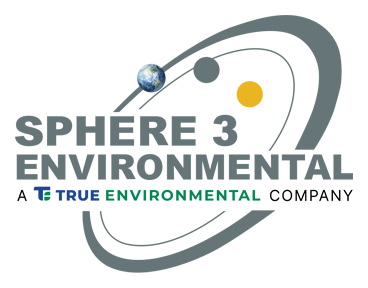Environmental due diligence timeframes are often short, unscheduled and unpredictable presenting numerous challenges to the potential buyer. Environmental liabilities may be significant, and can include environmental obligations and compliance risks that need to be quantified prior to closing.
Environmental Due Diligence in Support of Mergers and Acquisitions for Oil, Natural Gas, and Midstream Assets
Customary due diligence approaches used in other industries are not relevant or practical due to the unique nature of the asset and the multiple regulatory frameworks. Sphere 3 is staffed with professionals who are trained and experienced with the complex nature and purchase/sale agreement structures involved in the oil, natural gas, and midstream assets. We work with our clients to determine the appropriate due diligence strategy dictated by the structure of the proposed merger or acquisition. Our due diligence experience is nationwide with demonstrated experience in providing an impartial third party evaluation of known and potential environmental liabilities. Our teams are familiar with federal, state, and local regulatory frameworks, and skilled in site investigation techniques, development of remedial cost estimates, and regulatory compliance evaluations to assist in negotiated seller-retained liabilities, purchase price reductions, indemnities, escrows, or reserves
Environmental Due Diligence in Support of Mergers and Acquisitions for Commercial and Industrial Facilities
Sphere 3’s experience in due diligence services includes a wide range of clients associated with industrial and commercial facilities. With the knowledge that our work can materially impact a transaction, we tailor the scope of our assessments to particular concerns. An evaluation of a company’s operational compliance with applicable federal, state, and local regulations, while ensuring compliance with all permit conditions is essential in the due diligence process. Identifying the compliance of a facility is paramount in final negotiation of the purchase/sale agreement. Additionally, we recognize the urgency often associated with these projects. In many cases, the due diligence effort can be combined with the ASTM Phase I to provide all appropriate inquiry in those cases where the acquisitions include the transfer of ownership of the real estate.
Multi-Media Environmental Audits
During an environmental audit, Sphere 3’s audit team conducts a compliance examination of a plant, facility or group of facilities under common ownership or operation to determine whether it is complying with environmental laws and regulations. Audit protocols are developed for the specific industry and relying on professional judgment and evaluations of site-specific conditions, the team systematically verifies compliance with applicable requirements. The audit team may also evaluate the effectiveness of systems in place to manage compliance and assess the environmental risks associated with the facility’s operations. Environmental auditing has been and remains largely a voluntary activity. Federal and most state regulations allows new owners/operators to disclose environmental audit or due diligence findings to obtain immunity from penalties for non-compliance, if disclosed within 45 days of the acquisition. Companies and public agencies that have adopted the practice have done so for sound business reasons. Environmental auditing represents a management decision to seek compliance proactively, instead of simply reacting to crises.
ASTM Phase I & II Environmental Site Assessments
Environmental laws governing pollution liability are the Comprehensive Environmental Response, Compensation and Liability Act (CERCLA) and the All Appropriate Inquiry (AAI) rule. Sphere 3 utilizes the ASTM Standard E 1527-13 to complete a Phase I Environmental Site Assessment with the objective of securing an “innocent landowner defense” to CERCLA liability. Sphere 3 provides environmental professionals as defined in the ASTM Standard and 40 CFR Part 312.10 to conduct an environmental site assessment which is designed to determine if a recognized environmental condition exists on or adjacent to a site. ASTM methods rely on the selection and evaluation of a finite parcel of property. Accordingly, the ASTM standard is suited for the purchase of vacant land or a non-industrial facility, where property boundaries are well defined and compliance issues are not a concern. Phase II Environmental Site Assessments are sometimes required when a recognized environmental condition (REC) is identified during the Phase I Environmental Site Assessment process. Phase II Environmental Site Assessments consist of collecting soil samples to screen for contamination. This sampling is conducted by drill rig, hydraulic push, hand auger or backhoe, depending on site specific conditions. Phase II Environmental Site Assessments can also include sampling of groundwater and surface water. This testing is recommended when there is a significant potential for the existence of an environmental liability that can affect the value of a property. Environmental liabilities are costs associated with regulatory-mandated cleanup/disposal of regulated-waste and civil liability. Civil liability occurs when the contamination has migrated offsite or tenants sue over exposure or property damage associated with hazardous materials.
